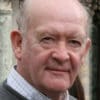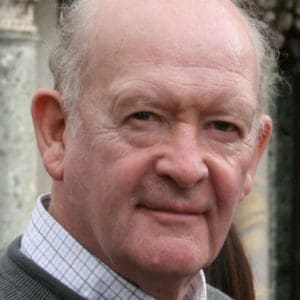Editor’s note: David Torkington continues his series on prayer with the fourth and final section, “From Meditation to Contemplation”. Read part 44 here, and begin with part one here.
The Mystic Way Part IV
I began by using the analogy of a spaceship destined for planet Mars, to show how the prayer of first fervor generates the power to raise the primeval desire for God off the ground. There is another more ancient aeronautical analogy that can explain our journey back to our maker: The analogy of the balloon. Earlier ascetical writers used it to explain that our desire for God would never rise heavenward unless the ropes that tethered it to the ground were severed. Each and every one must be cut before the balloon can rise and even one rope would be sufficient to keep it earthbound. Each rope represents an ingrained habit of selfishness and sin. Some of the more obvious sins of sensuality are encountered at their most testing in the Dark Night of the Senses, while the deeper sins with their insidious ingrained habits are encountered in the Dark Night of the Soul.
The Active Night
The Active Night involves daily giving the time, no matter how dark the night, to employ a new form of prayer that I will describe later. The strength given by the Holy Spirit in this prayer assists us in severing each and every thing in our lives that can prevent our purified love rising to God. However, from the Fathers of the Church onwards, the ascent involves passing through formidable barriers often depicted as contained within a dark and forbidding cloud. The Fathers of the Church see Moses as the archetypal mystic. He, like those who would follow him, had to pass through a dark and forbidding cloud before he reached the top of Mount Sinai to receive God’s Commandments. The idea of a cloud through which a mystic has to pass to reach a spiritual summit where the new law of love can be received is used by many later mystical writers
While this cloud is usually visualized as high up above us, blocking our way to our ultimate destination it should be visualized rather as located within us. It rises from the powers of evil that reside deep down in our unconscious mind that influences all we say and do in our conscious mind, without us hardly realizing it. Most of all it affects our minds and the powers of reasoning that philosophers have agreed distinguish us from the animal world. But the real truth is that we are not primarily rational animals as the philosophers would define us, but loving animals as the theologians would define us because we are made in the image and likeness of a loving God. Only love can rescue reason from what perverts it—not our love, but the love that is received in divine contemplation. That is why it is Jesus Christ who is our Savior, not Socrates.
Not Rational Animals but Loving Animals
God’s love is deepest in us, as the very ground of our being. It is here in our deepest self that our desire to love and be loved that will only ultimately be satisfied in God, rises to enter into him. Inspired by and supported with as much of God’s love that our weakness can contain, our love must try to pierce and pass through the cloud that stands between us and God; this cloud that arises from evil powers residing deep down in our unconscious mind. It is here that powerful, unruly and unacceptable urges, impulses and drives rise from what Freud called the Id, to disturb, disrupt and distort pure rational thought and action. Apart from occasional ‘Freudian slips’, they remain hidden from view. They most usually rise from the unconscious like a ‘malign miasma’ to hover over our conscious mind to seep into it surreptitiously to influence all we say and do without us being aware of what is happening. These perverted urges that lurk deep down within our unconscious do not have their ultimate origin in ‘nature’ or ‘nurture,’ but they do influence them. They influence them by determining their strength and the way in which each person is individually controlled by them. However, I do not intend to delve any further into depth psychology, for salvation, sanctification and mystical transformation do not come from psychology, but from the knowledge and practice of mystical theology that details the power of divine love and how to receive it.
A Mystical Meeting Point
With perseverance in prayer, our desire for the fullness of Love, suffused by the divine, can alone gradually penetrate through the cloud that would stop and stifle it. Eventually, in many years of inspired endeavor, our desire reaches an otherworldly mystical meeting point when the sparks of God’s love from within us on earth meet, to be engulfed in the furnace of God’s love in heaven. It is then that our love, and the desire that directed it Godward, becomes like a spiritual lightning conductor, to which I referred before, that enables the fullness of God’s love to be drawn down to do what is impossible without it. If we believe that we alone can combat, confound, and conquer the powers of evil within us then we would not only fail but more often than not be conquered by them ourselves. However, after the mystical meeting point in which the divine and the human are united, the very love that enabled us to rise to God enables his love to descend into us, gradually dispelling and destroying the powers of evil within. These are the powers that prevent the fulness of God’s indwelling from possessing every part of us in the Transforming Union. This is the union in which a sinner is transformed into a saint.
Jacob’s Ladder, or The Ladder of Perfection
Whereas I have used the analogy of a lightning conductor, ancient writers use the analogy of Jacob’s ladder, or the ladder of perfection, to signify the vehicle by which our love rises with God’s angelic help into God and his love descends into us. This enables God’s love to come down and enter into us, gradually dispersing the clouds that have been hiding his presence. This finally leads to the profound union, often called the Spiritual or the Mystical Marriage, for which we have always longed begins to take place. This is indeed heaven on earth, Paradise regained and a foretaste of the perfect Paradise to come. This whole journey has been taking place in the mystical body of Christ, ultimately brought about by God in what has been called the Passive Night, when after we have done all we can, God’s love does the rest, because we have chosen to admit him in the Active Night.
Paradise Regained
Just before he died on the Cross, Jesus promised the good thief, ‘Today you will be with me in Paradise’ (Luke 23:43). When St. Paul experienced the rapture that raised him to the heavens, he was ‘caught up into Paradise’ (2 Cor 12:4). The Fathers of the Church continually used the idea of Paradise regained to depict our ultimate destiny. The earliest baptistries are festooned with frescoes depicting paradisal scenes so that the new Christians would be in no doubt about their ultimate destination. This whole mystical ascent would take place in Christ the New Adam. It would be in, with, and through him that the Paradise lost, the Paradise postponed through sin, would become the Paradise regained through love. Just as the old Adam was said to have ‘walked and talked with God in the cool of the evening’, so we will be able to do likewise in the New Adam in whom we have been living and moving ever since we were baptized into his Mystical Body.
The Fathers of the Church tried to describe the completion of the mystic way as encountering and entering into the life of the Three in One in a beautiful paradisal garden. Later mystics emphasized the psychological dimensions of our ultimate destiny. In his work The Spiritual Canticle, St. John of the Cross visualizes the soul as Adam, who is led into Paradise to celebrate his mystical marriage with God.
The Mystical Reawakening
When we first encounter the joy of the Mystical Marriage, or the brief foretastes of this encounter in what St. Teresa calls the Mystical Betrothals, the feelings and the emotions that were so unresponsive in the darkest moments of the Dark Night are suddenly reawakened by Love. We begin to respond to the scriptures as we did before. Profound thoughts are ignited by psalms, hymns, sermons and so many other expressions of the faith that once moved the emotions, that were all but dead in the deepest and darkest moments of the night of purification. It is for this reason that St. Teresa said that what is experienced in first fervor foreshadows in some way what is to be experienced in the Mystical Marriage. This does not mean that there is a return to the sort of detailed meditation that was so helpful before. However, the love that has been purified in the night needs just a few moments to stir us, considering what Christ did for us while he was on earth, most particularly his birth, passion, death, and Resurrection. Now, with arms wide open, he draws us into himself to contemplate the Father and experience the infinite love that passes back-and-forth between the Three in One.
Spiritual Paternity
It is in this joyous contemplation where all we want to do is worship, praise, give thanks and adoration to God, that our thoughts soon begin to tell us that it is not enough. It is not enough to enjoy what we have been given and continually receive, because it is time to express our gratitude for the fruits that we receive in contemplation by sharing them with others, as Christ did throughout his life on earth. We may have been observing the first commandment, but now it is time to observe the second commandment. The temptation to remain and enjoy what we are receiving in prayer may induce us to forget our calling. When St. Francis came to enjoy the first fruits of contemplation that filled him with God’s love, he was tempted to be selfish. But when he consulted St. Clare in her monastery and Brother Rufino in his hermitage they both gave him the same message: he must go out to share the fruits of contemplation with others. Without hesitation, he left his solitude. Now he was called, like Antony before him, to Spiritual Paternity.
David Torkington is the author of Wisdom from the Western Isles and Wisdom from the Christian Mystics
Image used with permission of Pixabay.




